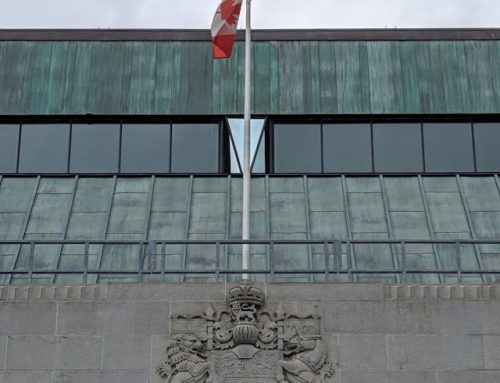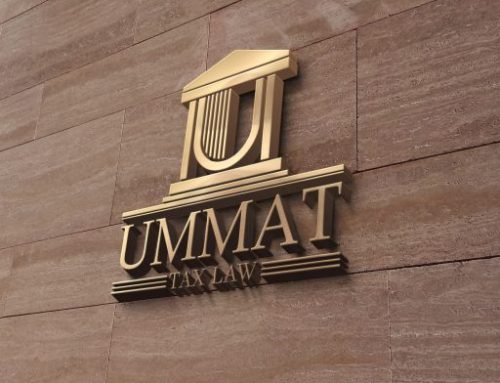Federal Court of Appeal Clarifies Onus of Proof in Tax Cases
Eisbrenner v. Canada 2020 FCA 93
Summary
This case involved charitable donations where the value of the receipts greatly exceeded the purported donation. The Tax Court of Canada (“TCC”) dismissed the appeals on the basis that the fair market value of the donations was not equal to the amounts reflected on the charitable receipts. The Federal Court of Appeal (“FCA”) agreed and dismissed the appeal.
Tax Court Decision
Facts of the Case
These were appeals by Mr. Morrison and Mr. Eisbrenner (the “Appellants”) of reassessments relating to their participation in pharmaceutical donation programs that existed from 2003 through 2008. The two Appellants had their appeals heard on common evidence. Mr. Morrison participated in the Canadian Gift Initiatives donation program (“CGI”) in 2003, and in 2004 and 2005 participated in the Canadian Humanitarian Trust donation program (“CHT”). Mr. Eisbrenner participated in the CHT program in 2005. CHT and CGI were both marketed by Canadian Donations Limited (“CDL”).
The principal issue under appeal was the fair market value of the pharmaceuticals donated. The Minister used a Drug Price Indicator Guide and the valuator for the program used the list price. The Minister did not challenge whether the pharmaceuticals were purchased or gifted to charities.
CGI Program
Of the two Appellants, only Mr. Morrison participated in the CGI program. Mr. Morrison stated that he was motivated to participate in the program to ensure essential medicines were distributed to developing nations, and that he was not motivated by the ultimate tax benefit. Mr. Morrison entered into a purchase agreement with CGI to purchase “certain goods” from CGI for $9,500. Mr. Morrison testified that the pharmaceuticals were not identified in the purchase agreement when he signed the agreement. Mr. Morrison eventually executed a deed of gift to the charity in favour of a charity. The charity then issued Mr. Morrison a tax receipt in the amount of $56,502.80. Mr. Morrison did not know the precise pharmaceuticals he had purchased or the value of those pharmaceuticals until he received the tax receipt.
The CRA’s reassessment, which challenged the value of the pharmaceuticals, was based on an appraisal obtained from a valuator employed by the CRA. Mr. Morrison relied on the valuations obtained by the CGI program.
CHT Program
Both Appellants participated in the CHT program, which replaced the CGI program . The CHT program involved the following elements:
- A client makes a cash donation to a registered charitable foundation (“Foundation A”);
- The client then applies to WHI to be considered as a potential Class A beneficiary of CHT;
- CHT transfers title to World Health Organization (“WHO”) Essential Medicine Units to the successful applicant (i.e. the client);
- The client donates the WHO Essential Medicine Units (“WHOEM Units”) to a registered charitable foundation of their choice (“Foundation B”);
- Foundation A issues a tax receipt for the cash donation; Foundation B issues a tax receipt for the net value of the WHOEM Units; and
- The WHOEM Units are distributed to those in need in developing countries.
Certain Canadian registered charities participated in the CHT program in one of three possible roles. The first role was as a cash charity, where charities received cash donations from participants and issued tax receipts to participants. The second role was as an in-kind charity, where charities received in-kind donations from participants in the form of certificates issued by CHT and issued tax receipts to participants. The third role was as a distributing charity. These charities received cash donated to the cash charities and the certificates donated to the in-kind charities. The distributing charities did not issue tax receipts.
CHT: Details
Mr. Morrison reported total cash gifts in 2004 and 2005 in the amount of $30,425 and in-kind donations of $78,924. Mr. Eisbrenner’s reported a cash donation in 2005 of $39,966 and reported an in-kind donation of $124,459.25. The receipts for the in-kind donations included a schedule that listed pharmaceuticals by name and the value attributed to those pharmaceuticals.
The Appellants had no knowledge about the CHT program beyond what appeared in the promotional materials for the program. Neither the Appellants nor the CRA could confirm that the pharmaceuticals at issue actually made it to the purported acquirers.
The Crown’s expert opined that CHT’s valuation over-valued the pharmaceuticals in question. Specifically, both methodologies recommended that fair market value be estimated with a Canadian list price that is typically greater than the actual cost for generic prescription drugs in Canada.
What Did the Parties Argue?
The Appellants argued that the amount of the gift should be what appears on the receipt, or at least the amount paid into the program.
The Minister argued that the valuations used by the programs were flawed. Further, the actual buy-in price included the program’s expenses, which was a further reason that the whole amount could not be allowed.
Decision
In respect of the CGI program, the Court accepted the fair market value posited by the Minister. In respect of the CHT program, the Court found there to be no reliable evidence that pharmaceuticals were actually gifted. As for the cash donations, only Mr. Morrison’s 2004 donation of $15,530 was at issue. The Court found that the amount at issue was gifted to a charity. Mr. Morrison was therefore entitled to the charitable donation tax credit available under section 118.1 of the ITA in respect of that gift.
Burden of Proof Issue
The Appellants raised the issue of burden of proof with respect to the assumptions of fact pleaded by the Minister. The argument was that they should only be required to demolish the assumptions they had knowledge of. The Court reviewed the relevant case law, including the House v. Canada[1] decision and concluded, following a lengthy discussion on the distinction between an evidential and persuasive burden, that the “ordinary” burden on the Minister is neither an evidentiary burden nor a persuasive burden; it is a tactical burden. The taxpayer will still have the persuasive burden. Furthermore, if the taxpayer can establish that assumptions in the reply were not made, then the Court need not consider them, unless there is evidence to establish them as part of the Court record.
Important Points
Generally, facts exclusively or peculiarly within the knowledge of the Minister cannot be assumptions to be disproved by a taxpayer. The question became, were the facts relating to the donation programs that the Appellants had no knowledge of, exclusively within the knowledge of the Minister? The answer was no. Justice Owen had considerable difficulty understanding how facts obtained by the Minister through the audit of the Appellants and the programs in which they participated could be considered exclusive or peculiar to the Minister. The facts regarding the substance of the program were considered to be outside the ambit of the Minister’s knowledge and would be clearly known by those involved in the programs even if not specifically known by the Appellants.
The Court found that both Appellants chose to participate in the two programs with little knowledge of those programs. Under these circumstances, it was not considered unfair to the Appellants to have the Minister assume what happened in those programs.
The Appellants appealed the decision to the FCA. The basis for Mr. Morrison’s appeal relating to the 2003 taxation year was based on his allegation the TCC erred in determining that the fair market value of the pharmaceuticals donated in 2003 was only $1,759. The issue raised by the appellants with respect to the CHT scheme was whether the TCC erred in finding that the certificates for the WHOEM Units were “worthless pieces of paper”.
Federal Court of Appeal Dismisses Appeal
The FCA quickly dispensed with Mr. Morrison’s appeal on the basis that the TCC did not commit any errors.
A central issue was whether the Appellants owned the pharmaceuticals in question. The Appellants claimed to have acquired them in their pleadings. The Crown denied this fact. The FCA found that since the Appellants relied on this material fact, they also had the burden to prove that they did in fact own the pharmaceuticals. Eisbrenner disagreed:
Despite having made this statement in his memorandum, when questioned during the hearing about the onus of proof related to the facts as pled by Mr. Eisbrenner, counsel for Mr. Eisbrenner responded that what he had pled in his notice of appeal should not be taken into account. In effect, his submission was that the notice of appeal is to be disregarded and the only document to be considered in a Tax Court appeal is the reply filed by the Crown.
Further, in Mr. Eisbrenner’s submission, he did not have to establish that he owned the pharmaceuticals on a balance of probabilities. Rather, he only had to raise a prima facie case, which he submitted was a lower standard than the balance of probabilities. Therefore, in Mr. Eisbrenner’s submission, even though Mr. Eisbrenner had pled the fact that he owned the pharmaceuticals, he was not required to prove this fact on a balance of probabilities.[2]
“He Who Alleges Must Prove”
The Court was not persuaded by this submission and in response reiterated the trite principle that “he who alleges must prove”, and also made it clear that Eisbrenner was bound by this principle. Furthermore, the Court was concerned that the Notice of Appeal would be useless if the material facts which must be included in that pleading pursuant to the Tax Court Rules were simply irrelevant. Since the Appellants had alleged in their Notices of Appeal that they owned the pharmaceuticals in question, they were required to prove it. Secondary and tertiary bases for appeal relating the admission of documents were also summarily dismissed by the FCA.
Call the lawyers of Ummat Tax Law for tax litigation representation.
[1] 2011 FCA 234.
[2] Eisbrenner v. Canada 2020 FCA 93, at para 44 -45.




